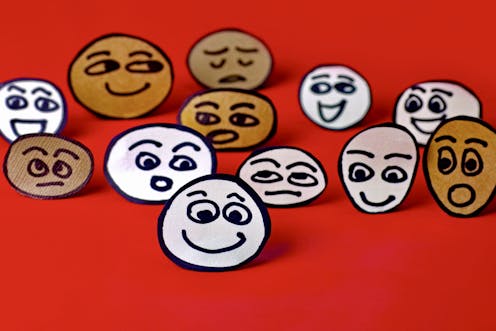
Happiness may be reshaping America’s political landscape.
Since the 1960s and the election of President John F. Kennedy, younger voters have supported Democratic candidates, while older voters leaned Republican. But that dynamic has been evolving, and now, in 2024, large numbers in both groups are bucking traditional assumptions about their political affiliation.
This shift challenges the age-old political adage that youthful idealism gives way to conservative pragmatism with age. As pollsters and pundits scramble to explain the phenomenon, one intriguing theory emerges: It may come down to happiness.
The unhappy vote for change
I am an interpersonal communication researcher and the co-founder and co-director of the Florida Atlantic University Mainstreet Political Communication Lab. Our lab investigates and analyzes public opinion and political trends nationwide. With the upcoming election, I’ve been specifically examining the potential influence of happiness on voting patterns.
Research worldwide indicates that happy people prefer keeping things the same, and they tend to vote for the incumbent in political elections. Voters who aren’t as happy are more open to anti-establishment candidates, seeing the government as a source of their discontent.
These findings may help to explain the Democratic Party’s waning support among young people.
This group is still reliably blue. Vice President Kamala Harris has an edge among voters under 30, with 50% favoring her over former President Donald Trump’s 34%. U.S. voters ages 18 to 35 mainly prefer Democratic views on issues like abortion and LGBTQ+ rights. Yet they are more likely to vote Republican than they have been in the past, especially young men.
Youth are no longer carefree
Declining life satisfaction and happiness levels among young Americans may help to explain their changing political preferences.
Our March 2024 poll found that 55% of respondents ages 18 to 34 reported dissatisfaction with their lives, compared with 65% of the general population.
These findings, as well as other national polls, challenge the common belief that young adulthood is one of life’s happiest periods.
Happiness has traditionally been seen as a U-shaped curve, with the youngest and oldest voters reporting greatest levels of happiness. Young adults worldwide reported being carefree and happy, enjoying their newfound independence and opportunities. Older folks, meanwhile, were finally past the stresses of juggling work, family and relationships, and beginning to enjoy retirement.
Today’s young Americans are unhappier than past generations. That’s true worldwide, according to the 2024 World Happiness Report, but the drop is particularly drastic in the U.S., where suicide rates among young people rose over 60% between 2007 and 2021.
Experts attribute the unhappiness of young Americans today to myriad factors, including a childhood interrupted by the pandemic, the dramatic increase in school shootings and rising costs of living. Young people are also stressed by political polarization, distrust in the media and two wars raging abroad, in Ukraine and the Gaza Strip.
Social media exacerbates these anxieties, encouraging young people to compare themselves with others in unhealthy ways and exposing them to a lot of negative news, which can make reality seem worse than it is.
All these happiness-dampening concerns may be shaping political preferences. Some unhappy young voters are drawn to candidates who promise economic stability and growth. Other young adults, unhappy with the political system, want radical change – any change.
Seniors for Harris
The changing political preferences of unhappy young Americans are particularly revealing when compared with those of older Americans, who have been getting happier in recent years.
Recent polling data suggests that older voters, long a Republican base, are trending blue in 2024. As of September 2024, Harris leads among older voters, with somewhere between 51% to 55% favoring her over Trump.
These happy seniors appear to be concerned about sweeping changes that could occur under another Trump administration, like ending even more abortion rights. The Supreme Court’s overturning of Roe v. Wade in 2022 erased what was seen as a major milestone and accomplishment for that generation.
Older Americans are also focused on retaining Social Security benefits, a Democratic priority that Trump has wavered on, and maintaining lower prescription drug costs. Both of these programs help keep older Americans happy and healthy. They barely register for young people.
Polls are notoriously slippery, and they’ll keep changing. But, increasingly, age is no longer a very good indicator of party affiliation.
Happiness matters at the ballot box
I am not suggesting that happiness drives all voting behavior or explains changing political preferences in the United States. But I am saying that it should not be ignored.
My research indicates that to understand why people vote the way they do, it’s essential to examine happiness alongside other key factors like the economy and personal experiences. By studying how happiness connects with age, life experiences and engagement with social media, researchers can gain clearer insights into the changing voting behavior of both young and old voters.
The 2024 presidential candidates seem to have intuited this. The Harris campaign is all about “joy” and celebrating happiness and community. The Trump campaign adopts an angrier tone and a grievance-filled approach.
Ultimately, happiness is more than just a mood. Just as much as ideology, the literal pursuit of happiness may be shaping decisions at the ballot box.
Editor’s note: The chart in this story documenting youth unhappiness has been updated to correct a typo. Fifty-five percent of respondents under 35 reported some degree of dissatisfaction with their lives, not satisfaction.
Carol Bishop Mills is the co-founder and co-director of the Florida Altantic University MainStreet Political Communication and Public Opinion Research Lab.
This article was originally published on The Conversation. Read the original article.







